
In northern Europe, amber is known as “sunstone” and “solar stone” for its golden, sun-like glow. It is also known as “Baltic gold” for its huge economic impact. The latter term is especially fitting, since northern Europe, notably the Baltic Sea coast at Kaliningrad, Russia, and adjoining Poland and Lithuania, has produced most of the world’s amber.
Today, tens of thousands of people work in the regional amber industry. Amber is the area’s iconic souvenir, and museums that showcase amber are significant tourist attractions. With the recent emergence of Ukraine as a major source of amber, northern Europe’s amber output is soaring. Average grades of amber now sell for several hundred dollars per pound, and regional production is estimated at 1,000 tons per year—a historic high.
But there are two sides to amber mining in northern Europe. With few alternative employment opportunities and lured by record amber prices, some 20,000 Kaliningrad Russians and Ukrainians now work as independent amber miners. And virtually all are unlicensed and unregulated. While amber mining provides a living for thousands and has boosted production to record levels, it has also brought environmental devastation, economic chaos, corruption, violence, protection racketeering, black-marketeering, and rampant smuggling.
The complex origin of northern Europe’s amber rush is rooted in the geology, occurrence, and history of amber and the centuries-old reverence for amber. In recent years, regional economics and politics are among the drivers of the amber rush.
This story is from the August 2020 edition of Rock&Gem Magazine.
Start your 7-day Magzter GOLD free trial to access thousands of curated premium stories, and 8,500+ magazines and newspapers.
Already a subscriber ? Sign In
This story is from the August 2020 edition of Rock&Gem Magazine.
Start your 7-day Magzter GOLD free trial to access thousands of curated premium stories, and 8,500+ magazines and newspapers.
Already a subscriber? Sign In
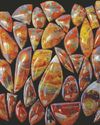
MORGAN HILL POPPY JASPER
In California, there are very few places to collect semi-precious stones. Many locations from the past have been either exhausted of the material or the land has been developed.
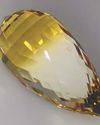
THE ACORN
The briolette gemstone has the same design attributes of a regular gemstone, however, the pavilion is elongated and the crown is usually domed. This is perfect for an elegant pendant, earrings or a pendulum.
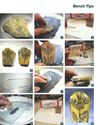
HOW TO PUT A PROTECTIVE CAP ON A CAB
To protect a specimen cab, often a cap is needed. In my case, I had a slab with the because of the color of the background and the pattern. This background had a more silicified consistency than most sandstones. It had no graininess like most sandstone, so I'm inclined to compare it to a jasper. The pattern was typical of a dendrite.

The Resilient Revival of Anne Brontë & Her Stones
For the first time, the Anne Brontë rock collection underwent complete description and identification, and along with Professor Hazel Hutchison of Leeds University and Dr. Enrique Lozano Diz at ELODIZ (a company specializing in spectroscopy analysis), an analysis of that collaboration, Anne Brontë and Geology: A Study of her Collection of Stones, was published in April 2022 in Volume 47, Issue 2 of the peer-reviewed journal, Brontë Studies & Gazette.\"

Amazing Women with Rock-Solid Careers
Explorers, Geologists, Educators & Jewelry Makers...
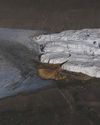
The Case of the Bleeding Glacier
It's a gory sight called Blood Falls. Ever since British geologist Thomas Griffith Taylor first noted it in 1911, it has been a mystery.
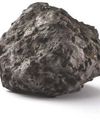
Asteroid Samples Are Said to Hold Invaluable Secrets
If Only Scientists Can Pop the Lid!
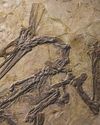
Paleontologists Embrace a New Method for Seeing Fossils within Rock
Fossil bone can be delicate. Attempts to remove it from a hard rock matrix by picking and scratching or etching with acids can be time-consuming and/or may end up obliterating that which you hope to study.
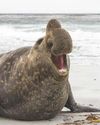
Need a Map of the Ocean Floor?
Call in the Seals!
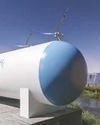
A Step Closer to Hydrogen, the "Climate-Friendly Fuel"
As I reported last June, the world is racing to find sustainably renewable, nonpolluting sources of energy to replace our carbon-based reserves of coal, oil and gas.